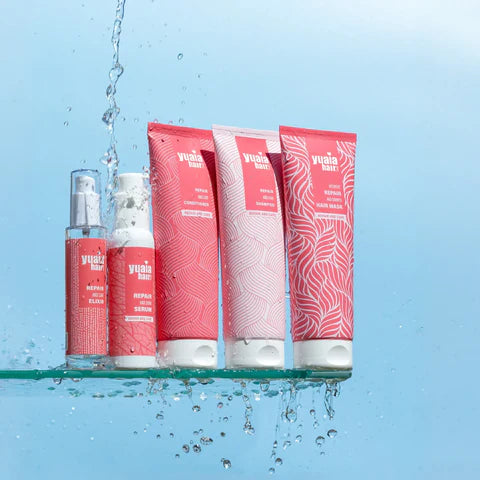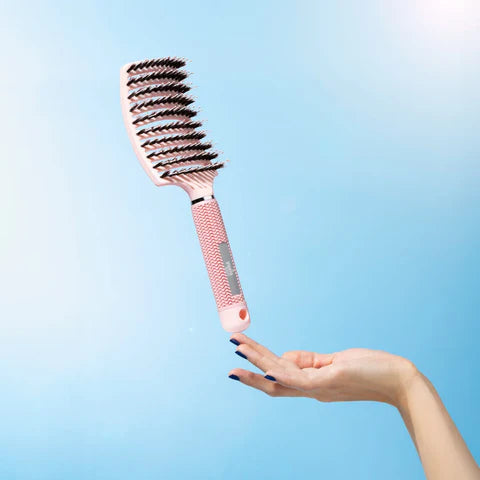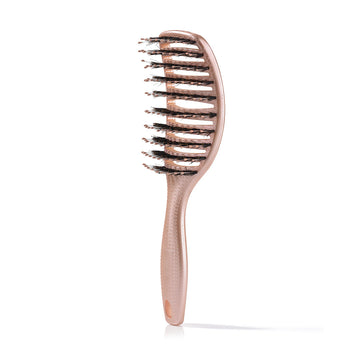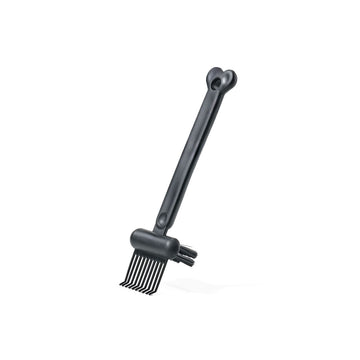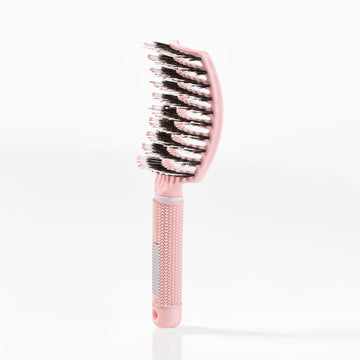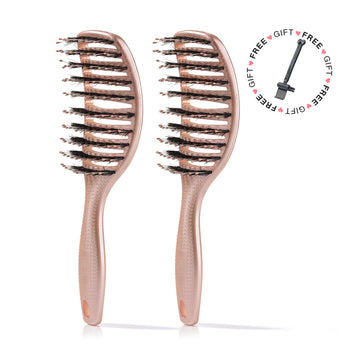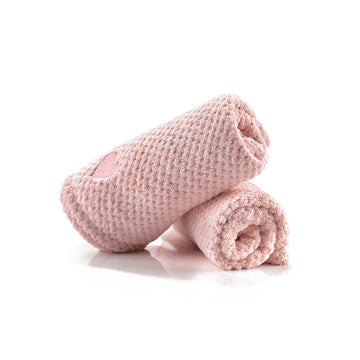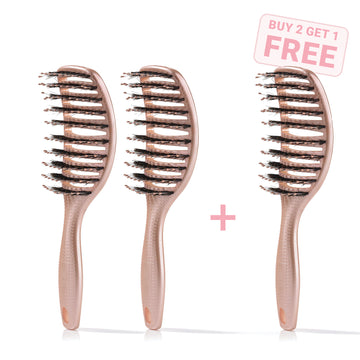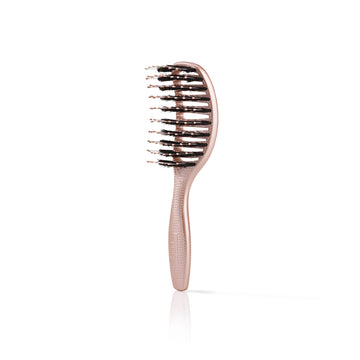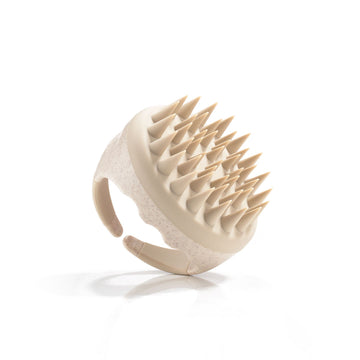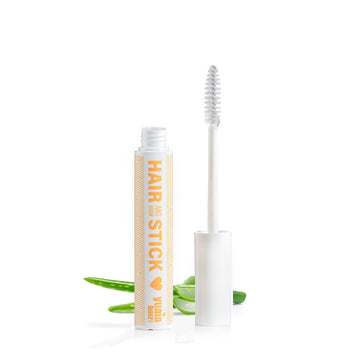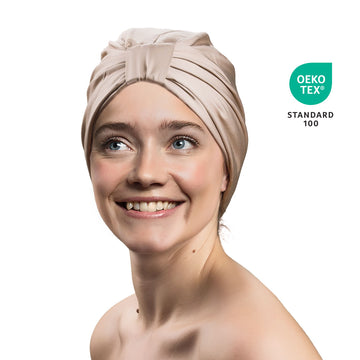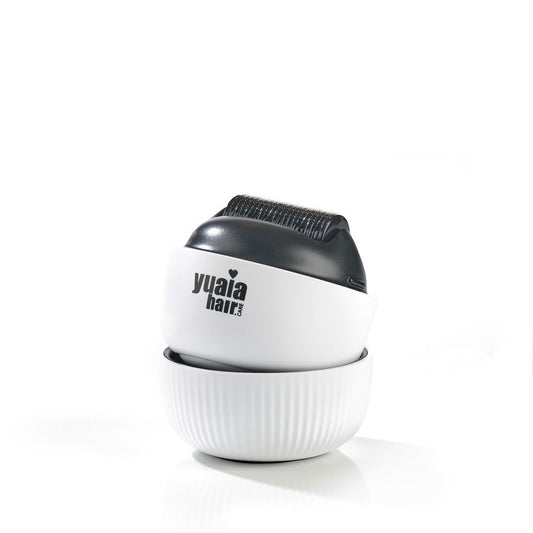
Who is red light therapy ideal for?
Red light therapy is especially effective for those experiencing androgenetic alopecia (pattern hair loss), both in men and women. It is most beneficial when used during the early stages of hair thinning, as follicles must still be present to respond to stimulation.
It may also be suitable for those dealing with stress-related hair shedding (telogen effluvium) or those recovering from medical conditions that have impacted hair health. However, those with scarring alopecia or other non-reversible follicle damage may not see the same level of benefit.
Red light therapy for hair loss
When addressing hair loss, red light therapy (RLT) is primarily aimed at slowing its progression and, ideally, reversing some of the effects by rejuvenating dormant or underperforming follicles. By targeting the scalp with specific wavelengths of light, RLT helps re-energize follicular cells and enhances the supply of oxygen and nutrients through increased blood circulation. This process can improve follicle function and, over time, may lead to thicker and more resilient hair strands.
Clinical trials have consistently shown a statistically significant increase in hair density and thickness among those who use RLT devices regularly and as directed. For example, a number of peer-reviewed studies have reported positive results after 12 to 26 weeks of use, especially among participants with mild to moderate androgenetic alopecia. These improvements are attributed to RLT's ability to extend the anagen (growth) phase of hair and delay the onset of the telogen (resting) phase.
One of the most appealing aspects of this treatment is its safety profile. The therapy is non-invasive, painless, and associated with minimal to no side effects when used properly. Unlike oral medications or invasive procedures, red light therapy does not interfere with hormonal balance or involve recovery time, making it an attractive and accessible option for long-term use among a wide range of people.
Red light therapy for hair growth
By improving follicle function and enhancing nutrient delivery through better blood circulation, RLT helps foster an environment conducive to hair growth. The stimulation of microcirculation in the scalp ensures that essential oxygen and nutrients are delivered more efficiently to the hair follicles, which can be particularly beneficial for revitalizing weakened or sluggish follicular activity. Over time, this process contributes to increased cellular metabolism, which plays a pivotal role in hair regeneration and follicle health.
As the therapy supports cellular regeneration, many often experience not only improved hair density but also better hair quality and strength. Many report that their hair becomes noticeably shinier, more elastic, and less prone to breakage. These enhancements are likely due to the combined effects of enhanced follicular productivity and a healthier scalp environment, which together create optimal conditions for sustained hair growth.
When compared to topical treatments or supplements, RLT provides a physical, targeted method of intervention, which many find appealing due to its ease of use and minimal systemic impact. Unlike oral supplements that must be metabolized and can take time to accumulate in the body, or topical agents that may cause irritation or inconsistent absorption, RLT acts directly at the root of the issue. This localized focus makes it a versatile option for those seeking a practical, low-maintenance addition to their hair restoration regimen.
Does red light therapy really work for hair loss and hair growth?
Experts generally agree that RLT can be a helpful part of a broader hair care strategy, especially when used in combination with established treatments like topical minoxidil or dietary changes. While it is not a standalone solution, red light therapy helps support overall follicle health and contributes to creating a scalp environment that is more conducive to hair growth.
Outcomes can differ significantly, but consistent use over several months is frequently associated with better hair density, thickness, and manageability. Some also report an improvement in scalp condition, including reduced dryness or irritation. It is important to stress that visible improvements typically require patience, with regular use—often three to five times a week—being a key determinant in the level of success achieved. When used as part of a comprehensive routine, RLT has the potential to enhance overall results.
How often to use red light therapy for hair growth
For best results, it is recommended to use red light therapy devices consistently, typically for a duration of 10 to 20 minutes per session, around three to five times weekly. The treatment schedule should be maintained over an extended period to allow the biological processes stimulated by the red light to take effect.
Generally, it takes between 12 to 24 weeks to observe measurable improvements, though some may start noticing subtle changes earlier depending on their scalp condition and the severity of their hair loss.
Consistency is critical. Sporadic or irregular use is unlikely to yield meaningful progress, as red light therapy relies on cumulative stimulation of the follicles over time. If treatment is paused or discontinued prematurely, the positive effects may diminish or even regress. Establishing a routine and sticking to it is essential for maximizing red light therapy's benefits and ensuring long-term results.
Selecting the right red light therapy device
Choosing a appropriate device is essential. Options include helmets, combs, and caps, each offering varying levels of convenience and coverage. Devices equipped with laser diodes often deliver deeper penetration compared to LED-only options.
Consumers should prioritize devices that operate within the 630–670 nm range and are FDA-cleared for safety and efficacy. Power output, coverage area, and user comfort are additional important considerations.
Other treatments for hair loss and hair growth
Beyond RLT, several other treatments are gaining increasing attention for their potential to combat hair loss and encourage new growth. Rosemary oil, for instance, is a widely praised natural remedy.
Clinical and anecdotal evidence suggests that it can improve blood circulation in the scalp, stimulate follicular activity, and reduce inflammation—all of which are key factors in creating a healthy environment for hair growth. Notably, rosemary oil is often compared to minoxidil in terms of effectiveness, with some studies suggesting similar results over a six-month period. Its appeal is further enhanced by its botanical origin and lower likelihood of side effects.
Caffeine-based shampoos are another accessible option. These products aim to block the hormone DHT (dihydrotestosterone), which is known to shrink hair follicles and lead to thinning. Regular use may help to maintain stronger and more active follicles.
Microneedling, often used in combination with topical serums, works by creating tiny punctures in the scalp to trigger collagen production and enhance product absorption.
Each of these treatments carries unique benefits, mechanisms of action, and degrees of accessibility. Choosing the right approach depends on your type of hair loss, overall health, lifestyle, and personal preferences. A consultation with a dermatologist or trichologist is recommended to determine the most suitable course of action.
A solution for lasting hair health
Red light therapy offers a promising, low-risk method for addressing hair loss and encouraging new growth, with a range of benefits that make it appealing to a broad audience. While not a one-size-fits-all solution, it has proven effective for many, especially when integrated into a consistent and well-rounded hair care routine. These benefits include its non-invasive nature, minimal side effects, ease of use, and compatibility with other hair restoration methods. For those seeking to explore non-invasive alternatives, red light therapy presents a scientifically supported, user-friendly option worth considering.
Frequently Asked Questions
How does red light therapy promote hair growth?
Red light therapy stimulates hair follicles by increasing cellular energy production and improving blood circulation in the scalp. This helps extend the growth phase of hair, revive dormant follicles, and enhance overall hair density and quality.
Is red light therapy safe for all hair types?
Yes, red light therapy is generally considered safe for all hair types and most scalp conditions. It is non-invasive, painless, and associated with minimal side effects when used as directed. However, those with certain medical conditions should consult a healthcare professional before starting treatment.
How long does it take to see results from red light therapy for hair loss?
Most users begin to notice improvements in hair density and quality after 12 to 24 weeks of consistent use, typically three to five times per week. Results may vary depending on the severity of hair loss and individual response to the therapy.
Can red light therapy be combined with other hair loss treatments?
Yes, red light therapy can be safely combined with other treatments such as topical minoxidil, supplements, or microneedling. Combining therapies may enhance overall results and support a comprehensive approach to hair restoration.
What should I look for when choosing a red light therapy device for hair growth?
Look for devices that operate within the 630–670 nm wavelength range and are FDA-cleared for safety and efficacy. Consider factors such as power output, coverage area, user comfort, and whether the device uses laser diodes or LEDs for optimal results.
 2-5 day delivery
2-5 day delivery
 25.000+ satisfied customers
25.000+ satisfied customers
 Satisfaction Guarantee
Satisfaction Guarantee



